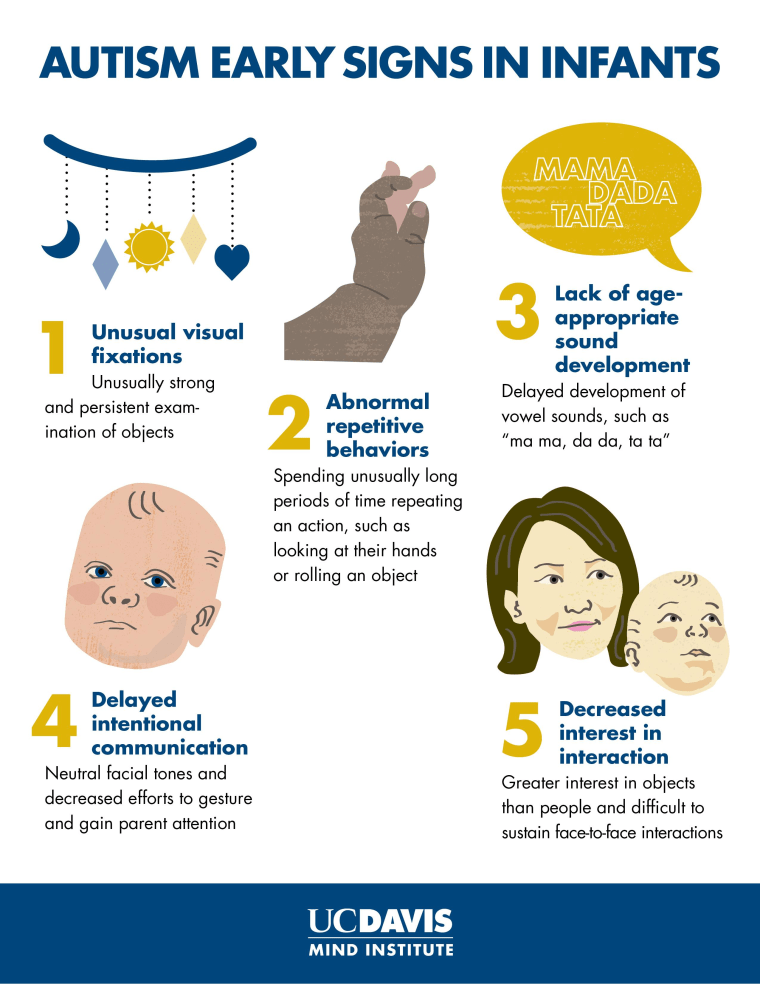Discovering Reliable Methods for Supporting People With Behavior Autism
Supporting individuals with behavioral autism needs a nuanced understanding of their special requirements. You'll find that individualized interventions, grounded in evidence-based techniques, can make a substantial difference. By collaborating with professionals and family members, you can produce a customized method that fosters interaction and growth. Yet what certain methods can you execute to ensure these individuals flourish? Allow's explore the reliable methods that can boost their daily experiences.
Understanding Behavioral Autism: Secret Characteristics and Difficulties
When you begin to understand behavioral autism, you'll observe several essential features and challenges that define the experience for people. Many individuals with behavioral autism usually fight with interaction, making it tough for them to express their emotions or demands effectively. You may observe repeated behaviors, such as hand-flapping or shaking, which act as coping systems for taking care of tension or sensory overload. Social communications might be challenging; people might find it hard to read social cues, causing misconceptions in partnerships.
It's vital to acknowledge that each individual is unique, and their experiences might vary. Understanding these features enables you to come close to support with empathy, cultivating a favorable connection that can improve their health and motivate development.
The Value of Personalized Interventions
When it concerns sustaining individuals with behavior autism, personalized treatments are crucial. By producing tailored treatment strategies that concentrate on private strengths, you can greatly improve their growth. Working together with support teams ensures everyone is aligned in supplying the ideal care feasible.
Tailored Treatment Plans
Developing customized intervention plans is important for efficiently supporting people with behavioral autism, as each person's strengths, difficulties, and needs vary substantially. Begin by gathering in-depth information about the person, including their preferences, triggers, and previous experiences. This adaptability not only cultivates engagement yet likewise advertises a sense of possession and empowerment for the individual.
Private Toughness Analysis
A private toughness analysis is vital for creating personalized treatments for individuals with behavior autism. By concentrating on everyone's special capabilities, you can create approaches that reverberate with their skills and rate of interests. This approach not only boosts involvement but additionally increases confidence.
When you recognize staminas, like extraordinary memory or artistic ability, you can tailor interventions that leverage these locations. This not just makes discovering extra effective however likewise fosters a feeling of achievement. Remember, every person has distinct capacities; identifying them equips you to craft purposeful experiences.
Including these strengths into restorative practices and daily regimens can result in enhanced results. Inevitably, focusing on toughness warranties that treatments are not just reliable but additionally enriching for the individual.
Collaborative Assistance Teams
Identifying private strengths sets the phase for creating joint support teams that concentrate on customized interventions. By bringing together specialists, household members, and the individuals themselves, you create an encouraging network that customizes methods to satisfy specific needs. Each group participant adds distinct understandings, ensuring a comprehensive approach that addresses behavior challenges effectively.
You'll locate that cooperation fosters open interaction, enabling continuous responses and changes. This versatility is vital, as it helps every person involved keep lined up with the person's choices and goals. Furthermore, involving in this team-based technique empowers people with autism, advertising their self-advocacy and confidence. Inevitably, tailored interventions created with joint support groups lead to even more meaningful progression and a better lifestyle.
Evidence-Based Communication Methods

When collaborating with people on the autism range, employing evidence-based interaction methods can greatly improve their ability to link and share themselves. Making use of visual supports, like picture routines or interaction boards, aids make clear assumptions and promotes freedom. Streamlining language and using concrete terms allows for much better understanding, lowering irritation.
Including social tales can prepare people for numerous scenarios, educating them ideal feedbacks and actions. Urging using assistive modern technology, such as speech-generating gadgets, equips individuals to communicate better. Additionally, employing foreseeable settings and constant routines can provide a sense of safety and security, making interaction much more efficient.
Keep in mind to be patient and provide them time to refine your words. Taking part in energetic listening, where you show their sensations and ideas, can reinforce your link. By carrying out these methods, you'll produce a much more supportive interaction ambience for individuals with autism.
Developing Helpful Settings
Creating encouraging atmospheres for individuals with behavior autism starts with implementing organized routines that offer predictability and safety and security. You'll additionally wish to develop sensory-friendly spaces that satisfy specific demands, lowering frustrating stimulations. Furthermore, using favorable reinforcement techniques can encourage desired habits and cultivate a sense of success.
Structured Regular Application
Developing an organized routine can considerably improve the environment for people with behavior autism. By developing a regular schedule, you supply predictability, which can minimize stress and anxiety and confusion. A well-structured setting promotes independence and self-confidence, sustaining their general development.
Sensory-Friendly Spaces Design

Favorable Reinforcement Strategies
When you incorporate positive support techniques right into your approach, you can greatly boost Get More Information the knowing and behavior outcomes for individuals with autism. This includes rewarding and identifying desired behaviors, which encourages rep of those behaviors. Start by recognizing what encourages the individual-- be it praise, tokens, or unique activities. Reinforce positive actions right away to create a clear connection between behavior and benefit. Uniformity is crucial; assurance that everybody entailed in their treatment uses the exact same reinforcement strategies. You can additionally progressively increase the intricacy of jobs as people end up being extra comfy, strengthening their development. By creating an environment where favorable habits are recognized, you promote self-confidence and a sense of success, inevitably sustaining their advancement and well-being.
Collective Approaches: Collaborating With Family Members and Experts

Including relative in decision-making encourages them and improves their ability to sustain their liked ones. Experts, including specialists and instructors, can offer valuable sources and training that additionally assist families.
You should additionally value each celebration's point of view, identifying that families know their kid finest while specialists bring specialized understanding. By crafting customized plans with each other, you create a customized technique that attends to one-of-a-kind requirements. Autism Behavioral Therapy. Eventually, this partnership not just profits the specific with autism however likewise reinforces the assistance network surrounding them, making it more cohesive and efficient
Incorporating Social Skills Educating
Building on the solid collaborations created in between professionals and families, incorporating social skills training can significantly improve the assistance offered to individuals with behavior autism. This training assists you educate essential interaction abilities, such as launching discussions, understanding non-verbal hints, and responding appropriately in social scenarios.
By making use of organized tasks, role-playing, and real-life scenarios, you develop opportunities for technique in a secure setting. Encourage individuals to take part in team setups where they can engage with peers, fostering relationships and enhancing their convenience in social contexts.
It is very important to customize the training to each person's one-of-a-kind toughness and difficulties, guaranteeing they feel positive and capable. Consistently incorporating feedback from both households and professionals can refine these strategies, making social skills educating extra efficient. Inevitably, you're encouraging people with the devices they need to browse social interactions successfully and develop purposeful relationships.
Keeping Track Of Progression and Adjusting Techniques
As you carry out social abilities training, it's critical to check progression and readjust methods as necessary. Monitor actions, noting setbacks and improvements. Usage tools like graphes or lists to visualize growth and determine patterns. Consistently evaluate your observations to evaluate what's working and what isn't.
Involve the person in representation, asking how they feel concerning their progression and what obstacles they encounter. This responses is important for tailoring your method. Don't wait to change them. if particular approaches aren't generating results.
Work together with various other caregivers or professionals for fresh perspectives and understandings. By staying conscientious and responsive, you create a setting that cultivates development and development.
Often Asked Questions
What Are the Typical Misconceptions About Behavioral Autism?
You may think behavioral autism just affects interaction, but it includes a lot a lot more. Several believe all people with autism act the exact same, neglecting their unique qualities and capacities. It's vital to comprehend each individual's distinctions.
How Can Innovation Assist in Sustaining People With Behavior Autism?
Innovation can boost interaction, supplying tools like see here now applications for social skills and habits monitoring. You can utilize online fact for immersive experiences, and wearable tools can keep an eye on emotional states, aiding you sustain individuals efficiently.
What Duty Do Sensory Processing Issues Play in Behavioral Autism?
Sensory processing problems can greatly influence actions. You may see that frustrating sensory input causes anxiety or meltdowns. Comprehending these difficulties aids you create a more supportive environment for people experiencing sensory overload.
Exist Details Nutritional Referrals for Individuals With Behavior Autism?
Yes, details nutritional referrals can assist. visit site You may take into consideration a gluten-free or casein-free diet regimen, which some locate useful (Autism Behavioral Therapy). Always seek advice from a health care specialist prior to making considerable modifications to guarantee it's ideal for you or your loved ones
How Can Peers Be Informed to Support Individuals With Behavior Autism?
To educate peers, you can arrange workshops, produce useful products, and urge seminars. Involving activities, like role-playing situations, aid them understand challenges encountered by people, fostering compassion and effective assistance within the neighborhood.
Checking Out Effective Methods for Supporting Individuals With Behavior Autism.
Creating customized treatment strategies is essential for effectively supporting individuals with behavioral autism, as each person's difficulties, staminas, and requirements vary substantially.A private staminas analysis is vital for developing individualized treatments for individuals with behavior autism.To sustain individuals with behavioral autism, creating sensory-friendly areas is important, as it can greatly enhance their convenience and emphasis.Joint techniques are essential for supporting people with behavior autism, as they cultivate a strong collaboration between households and specialists.
Comments on “Can Autism Behavioral Therapy deliver results? Find out how”